Varicose veins is a common venous disease that mainly affects women's legs. Its essence lies in the dilatation or elongation of the lower limb veins, ultimately leading to the thinning of the veins walls. This disease cannot be ignored as it can lead to serious complications such as venous insufficiency, thrombosis, bleeding and necrosis.
This disease cannot be ignored as it can lead to serious complications such as venous insufficiency, thrombosis, bleeding and necrosis.
Gangrene is dangerous because if it is left untreated, it can lead to amputation, blood clots, and even death - a blood clot separates to the heart, causing a stop. beat. It is imperative to treat the disease early, before complications occur.
Reason
Scientists have proven that the tendency to varicose veins is due to genetics. If your loved one has been diagnosed with varicose veins, it is most likely developing in you.
The following reasons may stimulate its development:
- hormonal disorders;
- is pregnant;
- high load on the foot;
- bad habit;
- decreased motivation.
The main natural cause of varicose veins is the increased load on the vessels. Loads can occur both from physical inactivity and due to increased physical activity. 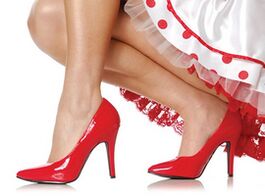 Usually, the office lifestyle leads to varicose veins - large amounts of time sitting or standing. In this case, blood circulation is disrupted, forming stagnant areas, which in turn leads to vascular deterioration.
Usually, the office lifestyle leads to varicose veins - large amounts of time sitting or standing. In this case, blood circulation is disrupted, forming stagnant areas, which in turn leads to vascular deterioration.
Unhealthy diet also increases the risk of varicose veins. The cause of the disease may be due to increased intake of fatty foods, fast foods, cholesterol, and caffeine. All of these negatively affect the health of the veins. Excessive physical activity is also harmful.
Pregnant women are also at risk. The physical features of pregnancy interfere with the proper blood supply to the legs, often causing the development of varicose veins. In addition to the inadequate blood supply to the legs, changes in the hormonal status of pregnant women can also cause the disease. During this period, it is recommended to regularly check the condition of the leg, in case of pain, need to see a doctor immediately. The inflamed veins may go away after the baby is born, but as a precaution, you can wear special-material underwear.
Symptoms
You can suspect the development of varicose veins using a variety of symptoms:
- Swollen legs. Strengthening towards the end of the workday is a common trait.
- Calf soreness is a primary sign.
- Sudden leg cramps.
- Long-healed wounds and bruises are a late symptom.
- Enlarged veins, zigzag lines or nodules are primary signs.
- Loss of hair from the inner surface of the legs, thickening of the skin is a late symptom.
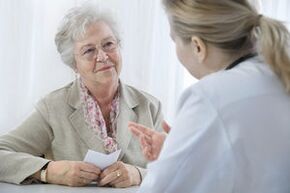
An important characteristic of the manifestation of symptoms is that they increase in the evening, either after a long period of standing still or not moving. If you find at least one symptom of the disease, you should immediately see a doctor. The diagnosis of varicose veins is carried out by a vein doctor - a specialist in the vein. For diagnosis, periodic examination is not enough. Doppler ultrasound is necessary. If necessary, varicose veins can be confirmed using either radionuclides or radiography. In this case, the distribution of the specially introduced substance in the flasks will be investigated.
Treatment
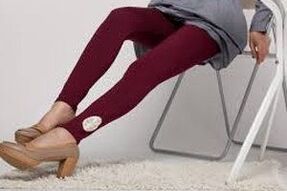
The popularity of varicose veins has stimulated the creation of a wide variety of treatment options, both medicinal and folk. If possible, contact your doctor, who will tell you exactly how to treat you, based on your individual characteristics. Folk remedies should only be used in the absence of the possibility of professional treatment. They relieve the symptoms of the disease, but do not eliminate its cause.
Medicines
All drugs are divided into two broad groups: topical drugs and synthetic drugs. It should be understood that drug treatment is only relevant in the early stages of the disease. In advanced cases, drug therapy is also used, only to prevent the spread of the disease.
The most common treatment for anticoagulants. They thin the blood, prevent vasodilation, reduce the risk of blood clots. They can be taken both orally and in the form of gels and ointments, or injections. Dosage and choice of a particular drug can only be trusted by the attending physician. Vascular protection drugs improve blood vessel microcirculation, thereby eliminating the cause of the disease.
Leeches are also used to treat varicose veins. When they bite, a special natural substance, hirudin, enters the body.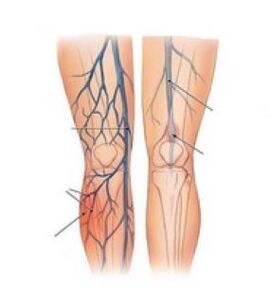 This dilutes the blood, reducing the risk of blood clots forming. This method is less effective than medication, but for some people this is the only possible way. Treatment with leeches has a cyclical nature.
This dilutes the blood, reducing the risk of blood clots forming. This method is less effective than medication, but for some people this is the only possible way. Treatment with leeches has a cyclical nature.
Surgical treatment
The essence of surgical treatment is to exclude or completely remove diseased veins from the circulatory system. Usually, such procedures are performed by injecting a special substance into a vein, which will stick together from the inside. The most effective, unhealthy method is to surgically remove the damaged veins. At the same time, the general condition of the circulatory system is practically not affected. The veins that cause varicose veins pass through them only 10% of the total blood flow in the legs. Removing them will load the rest of the vein, but will not cause significant harm to your health.
Alternative Treatment
Varicose veins can be treated with folk remedies, but at your own risk. Most of these methods are ineffective in the early stages of the disease, and are ineffective in the later stages. Alternative treatments relieve the symptoms of varicose veins, but do not cure it, which is especially dangerous in severe cases. Such a trip is very dangerous for your health.
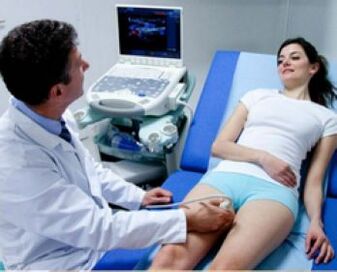
Among the most popular folk formulas that can be used to treat varicose veins are:
- Apple Cider Vinegar wormwood
- ;
- stinging nettle;
- garlic.
Apple cider vinegar can heal veins from the outside, reducing flare-ups even in young people. The sores are treated twice a day. The vinegar is diluted in the bath, put the feet in it for 5 minutes. After such procedures, you should let your feet dry on their own. Garlic is used as an ointment. To prepare, one part garlic is mixed with two parts butter. The resulting gel is applied to the affected areas of the legs at night.
Precautions
Prevention in general and allows to not only prevent varicose veins but also improve overall health level, eliminate symptoms and as a result improve wellness.
Main Precautions:
- healthy food;
- play sports;
- has no high venous load.
Healthy food involves the use of fruits and vegetables in the diet, especially raw. Eating walnuts and seafood also has beneficial effects on the health of the veins. In this case, it is important to forget about fatty and salty foods, alcohol and products containing caffeine.
Regular exercise improves blood flow in the legs, which has a positive effect on the health of the veins. Don't exercise too much - moderate running and cycling is great. It is important that even during sedentary work, to exercise periodically, not to stagnate blood. Contraindicated to cross legs in sedentary jobs.
Varicose veins is a disease that requires treatment in its early stages. Don't be afraid to see your doctor when you have the first symptoms. Today, the treatment of varicose leg varicose leg disease in women is no longer as expensive as in the past and does not endanger the body. With pre-treatment, you will get health and comfort in your feet for many years to come.












































